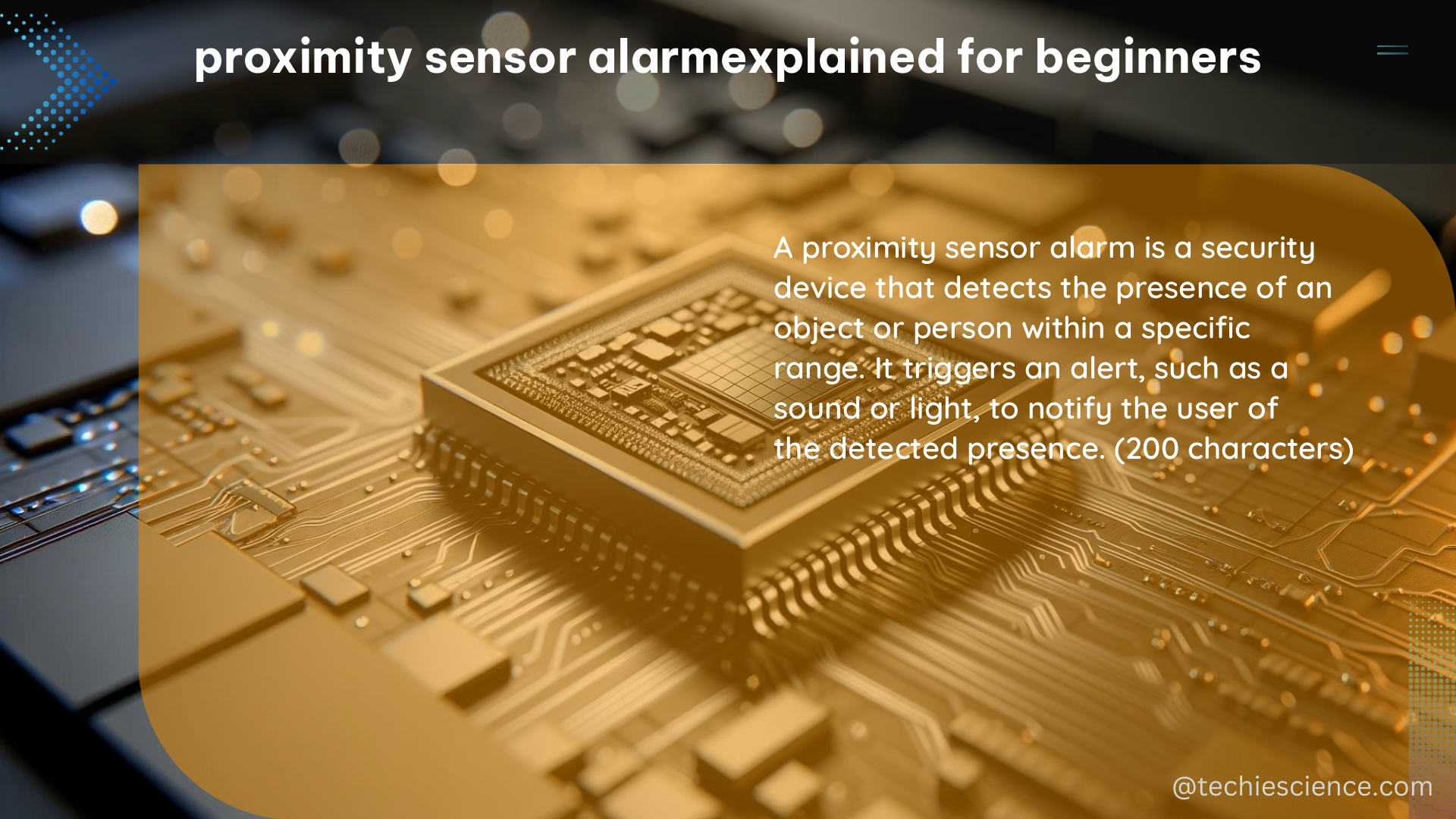A proximity sensor alarm is a versatile security device that detects the presence of an object or person within a specific range and triggers an alarm when motion is detected. These sensors can be used for a variety of applications, including home security, industrial automation, and even gaming. In this comprehensive guide, we’ll explore the different types of proximity sensors, their technical specifications, and how you can build your own DIY proximity sensor alarm.
Understanding Proximity Sensors
Proximity sensors can be classified into two main types: active and passive.
Active Proximity Sensors
Active proximity sensors emit a signal, such as electromagnetic waves or ultrasonic waves, and measure the reflection of that signal to detect the presence of an object. These sensors are often used in industrial applications, where they can detect the presence of metal objects or measure the distance to a target.
Passive Proximity Sensors
Passive proximity sensors, on the other hand, do not emit a signal. Instead, they detect changes in a magnetic or electric field to sense the presence of an object. These sensors are commonly used in security applications, where they can detect the movement of people or objects without emitting any signals that could be detected by an intruder.
Proximity Sensor Alarm Classifications

Proximity sensor alarms can also be classified as either continuous or discrete.
Continuous Proximity Sensor Alarms
Continuous proximity sensor alarms provide a continuous output signal that varies in response to the distance of an object. These sensors can be used to measure the distance to an object or to detect the presence of an object within a specific range.
Discrete Proximity Sensor Alarms
Discrete proximity sensor alarms, on the other hand, provide a binary output signal that indicates the presence or absence of an object. These sensors are often used in security applications, where they can trigger an alarm when an object or person is detected within a specific range.
Technical Specifications of Proximity Sensor Alarms
The technical specifications of a proximity sensor alarm will depend on the specific model and type of sensor used. Some important specifications to consider include:
- Detection Range: The maximum distance at which the sensor can detect an object or person.
- Sensitivity: The sensor’s ability to detect small changes in the environment, such as the movement of a person or object.
- Response Time: The time it takes for the sensor to detect a change in the environment and trigger the alarm.
- Power Consumption: The amount of power required to operate the sensor, which can be an important consideration for battery-powered applications.
Building a DIY Proximity Sensor Alarm
For beginners who want to build their own proximity sensor alarm, there are a number of DIY guides and tutorials available online. One example is a tutorial for creating an intruder alarm that sends text message alerts when motion is detected using an Arduino board with Wi-Fi capabilities and a range sensor.
This project takes about 45 minutes to complete and requires the following components:
- Arduino board with Wi-Fi capabilities
- Range sensor (e.g., ultrasonic or infrared)
- Jumper wires
- Mini breadboard
- 9V battery
- 9V battery box with barrel plug and on/off switch
To build the alarm, you’ll need to connect the range sensor to the Arduino board, write the code to detect motion and trigger the alarm, and set up the Wi-Fi connectivity to send text message alerts. The tutorial provides step-by-step instructions and sample code to help you get started.
Additional Resources
If you’re interested in learning more about proximity sensor alarms and related topics, here are some additional resources:
- Quantitative vs. Qualitative Data: A Guide
- An Input-Output Measurable Design for the Security Meter Model to Quantify and Manage Software Security Risk
- Why Nokk’s Gadget Triggers Proximity Alarms in Rainbow Six Siege
Reference:
- Quantitative vs. Qualitative Data: A Guide
- An Input-Output Measurable Design for the Security Meter Model to Quantify and Manage Software Security Risk
- Why Nokk’s Gadget Triggers Proximity Alarms in Rainbow Six Siege

The lambdageeks.com Core SME Team is a group of experienced subject matter experts from diverse scientific and technical fields including Physics, Chemistry, Technology,Electronics & Electrical Engineering, Automotive, Mechanical Engineering. Our team collaborates to create high-quality, well-researched articles on a wide range of science and technology topics for the lambdageeks.com website.
All Our Senior SME are having more than 7 Years of experience in the respective fields . They are either Working Industry Professionals or assocaited With different Universities. Refer Our Authors Page to get to know About our Core SMEs.